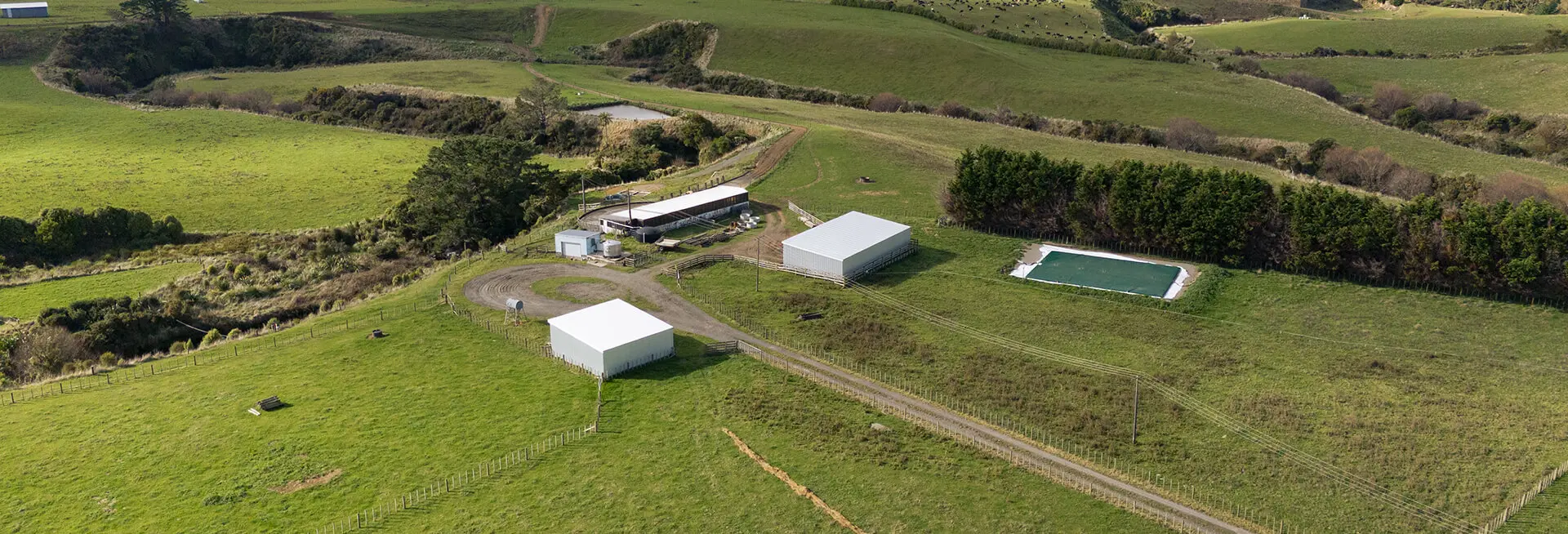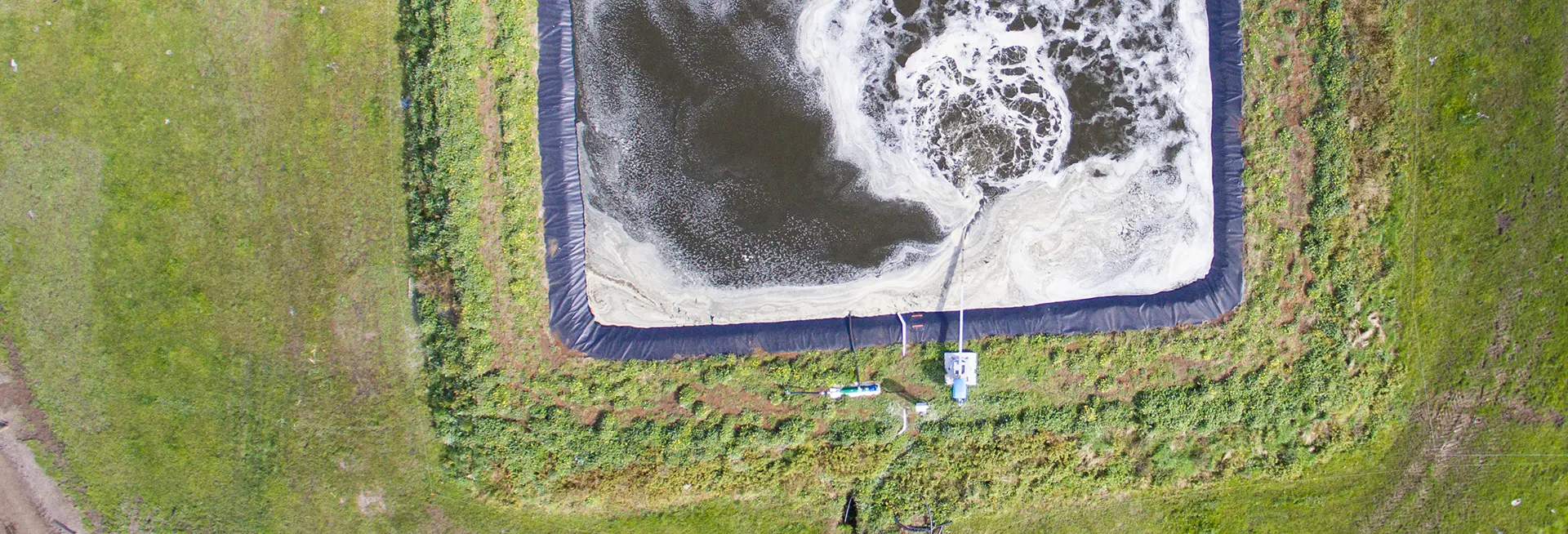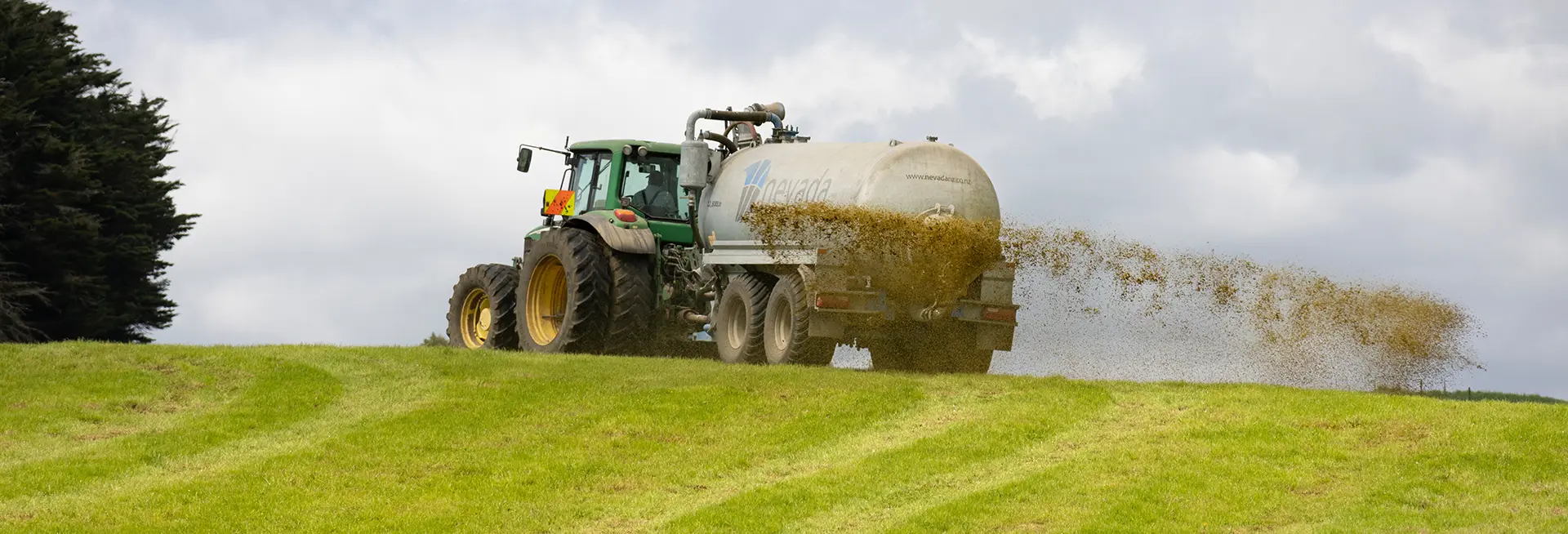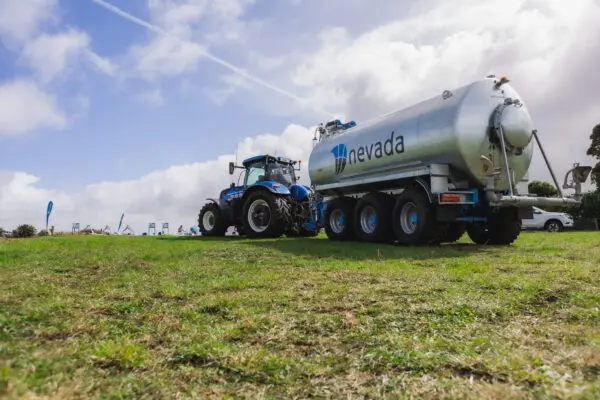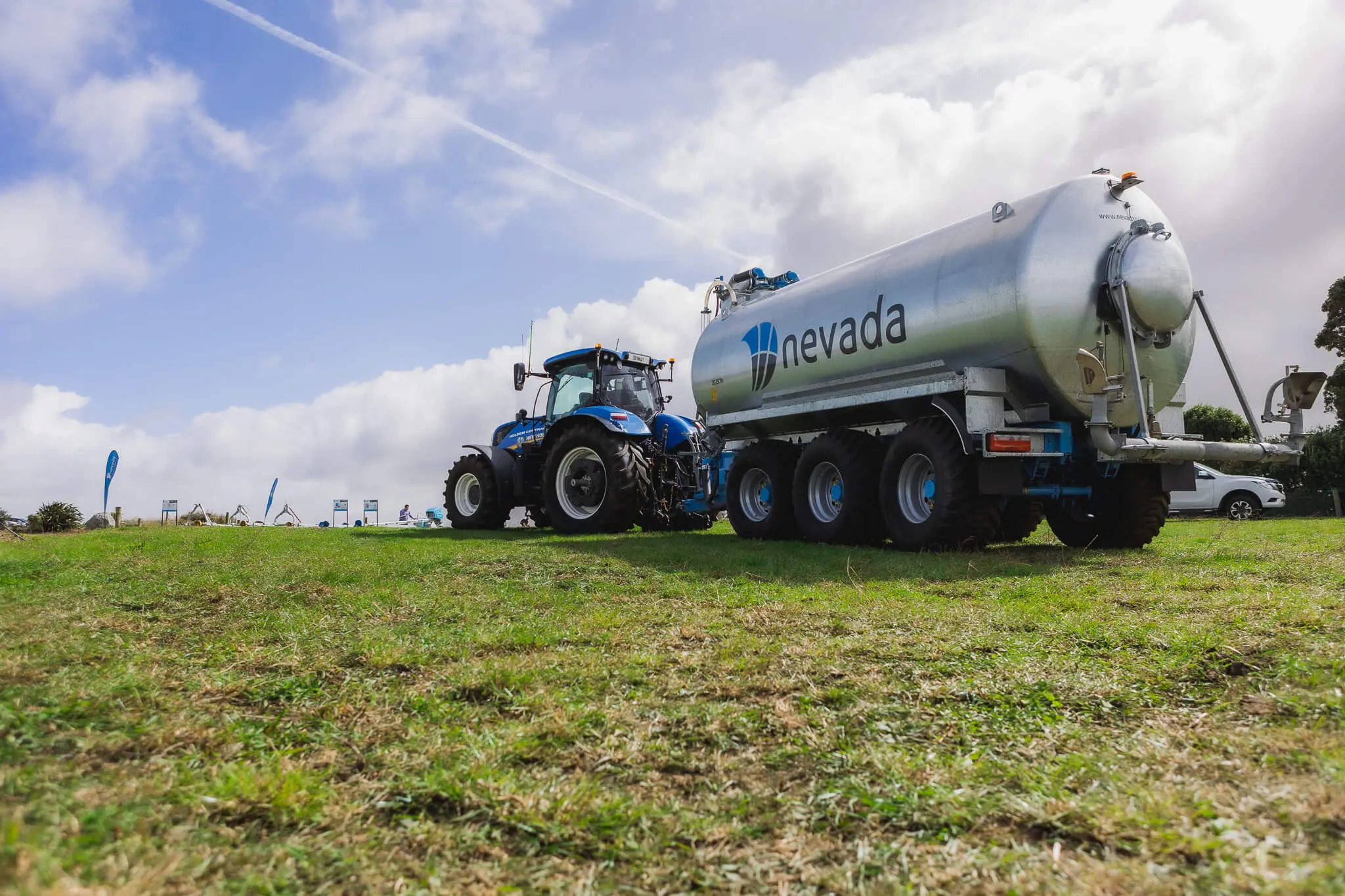Who knew your cow’s poop could be so valuable?
As a dairy farmer, you’re running a hugely costly business. There are so many different factors you need to consider in the management of your herd and land, and you’re at the mercy of fluctuating payouts for your product. One bad drought or record rainfall can destroy an entire year’s profits.
It’s a tough business, and you have to be tough to survive.
Any savings you can make on your farm can help you thrive even when times are lean. That’s why you should be looking closely at how you cows can give more back to the farm. That’s right – we’re talking about their dung, crap, poop, or whatever you want to call it.
The faeces from your herd can be a hugely valuable commodity to you, in the form of farm dairy effluent. That poop can save you tens of thousands a year. Find out how below…
What is farm dairy effluent?
After milking, you wash down your holding yards and dairy shed. The resulting mix of faeces, urine, teat washings and water used in the wash down forms your dairy farm effluent.
Up until recently, most dairy effluent in New Zealand was treated in a two-stage aerobic and anaerobic pond system, before being discharged into waterways.
Despite heavy regulations, this discharge has caused environmental damage across the country. Added to this, the financial benefit to farmers of applying effluent to pasture have been made more pronounced by rising fertiliser prices.
A growing number of farms are utilising dairy farm effluent for land application, and reaping the rewards of lowered fertiliser bills and a better reputation in the community. Is it time you joined them?
It’s time to think of farm dairy effluent as a resource, not a waste
Are you throwing away good money when you discharge your effluent? How much could you really save from apply effluent to your land?
According to Logan Bowler, the environmental extension specialist for DairyNZ, the average dairy cow on a predominantly grass diet produces $25 worth of nutrient annually. For a 400-cow herd, that’s about $10,000 a year in fertiliser savings.
This number could vary dramatically, depending on the farm size and the number of cows. For farms that use supplement feed, the savings could be even higher – usually, a supplement-fed cow can produce $35 in savings.
‘Every kilogram of supplement that comes in the gate brings nutrients with it. As an example, a 500-cow farm in Tararua bringing in 650kg of supplements per cow annually and producing 350kg milk solids (MS)/cow is applying $17,500 worth of nutrients to their paddocks in effluent.’
Logan Bowler, Environmental Extension Specialist – Dairy NZ
While this nutrient value won’t fully cover the cost of the storage and irrigation system, when you apply effluent to your land, you’ll be able to dramatically reduce your fertiliser costs, and pay the interest and principal on capital borrowing for your effluent set up. Over time, once the setup had been paid off, you’ll be able to realise those savings. You’ll be laughing all the way to the bank.
How can effluent save this much money, and how can you make sure you’re making the most effective use of effluent? Find out below.
Dairy effluent makes a valuable fertiliser
As your cows eat the grass, their stomachs process the nutrients they need, and pass the rest through to be evacuated. The fecal matter from your herd contains many of the essential minerals and nutrients you need to put back into the pasture in order to grow adequate grass to keep your herd healthy.
As well as being a great source of nitrogen (N), phosphorus (P), potassium (K), magnesium (Mg) and sulphur (S), the organic matter also improves the ability of your soil to hold water and drain effectively. Effluent helps make soil less prone to compaction and erosion.
Sounds simple, right? Well, it is pretty simple, but there’s a bit more to it than that.
The problem with dairy effluent is that it varies greatly in the amount and type of nutrients available. In a herd, there are animals of various ages, each eating from different areas of the pasture. Seasonal variations in the nutrient values of pasture also play their part.
When you add the differing amounts of water used to hose down the dairy shed (thereby diluting the effluent), what you end up with is effluent of varying degrees of nutrient content and therefore, varying value as a fertiliser.
By treating, controlling, and managing your effluent, you can ensure you constantly produce a high quality fertiliser, and that you make the best use of the effluent you’ve got. Applying quality effluent year after year will produce excellent pasture, which will in turn help you to keep a healthy and high yield herd.
How to get higher returns from your dairy effluent
If you’re already using effluent, there are ways to make it even more effective. If you’re not yet applying effluent to your fields, this guide will help you to start thinking about how to design your management system.
The key to getting the most out of your effluent is effective management on all stages of the effluent process. You need to make sure you’re set up in such a way that you’re not forced to irrigate when soil is waterlogged (or it will be too wet to absorb the effluent) or if your equipment malfunctions or breaks down.
Below, we’ve listed our top tips to help you plan your effluent system or improve upon your existing system. The greater the savings you can squeeze from your effluent, the more money you have available for other areas of farm growth.
1. Ensure you have adequate storage
If you don’t have enough effluent storage for your needs, you’ll end up having to apply effluent in winter or spring when the soil is waterlogged. This also puts additional pressure on farm workers and makes poor use of the nutrient value of the effluent, so most of it will end up wasted.
When designing or upgrading your system, it’s important to work out exactly how much storage capacity you’re going to need to contain all the effluent you produce during winter and spring. This will result in a better yield and help your effluent system to be more efficient. Thus, more money in your pocket.
We recommend reading our article on how to figure out the correct size for your effluent pond, and talk to the expert team at Nevada about your needs. We’ve designed thousands of effective effluent systems on all types and sizes of farm, and can help you come up with a design that fits your needs and budget.
2. Check the nutrient levels
Nutrients are fascinating. Too little or too much, and your pasture won’t get what it needs to thrive. Your herd will suffer from health issues, and you’ll need to bring in supplement feed to give them the nutrients they need to produce.
Your soil acts as a filter. Soil microbes break down particles, kill harmful bacteria (so cows, pasture and humans aren’t impacted), and convert nutrients to forms that are available for plants to use.
Soil can only filter so much at a time, and different types and conditions of soil will filter at different depths and rates. If you apply too much effluent, you may end up with:
- Surface “ponding”, where effluent sits on top of the soil. This will damage your pasture and expose your herd to harmful bacteria.
- Runoff from paddocks into waterways, polluting streams and rivers and likely placing you in violation of effluent compliance with your local council, and wasting good nutrients. This could result in a hefty fine.
- Polluted groundwater, where effluent has seeped too deep into the soil.
- Poor fertilisation – if the effluent seeps past the root zone before the plants have a chance to use the nutrients.
You have key nutrients you’ll need to manage and weigh against each other to get the correct amount of effluent to apply. Those nutrients are nitrogen (N), potassium (K), phosphorus (P), magnesium (Mg) and sulphur (S).
Councils allow for 150kg of nitrogen per hectare. However, as your pasture requires certain amounts of the other nutrients as well – too much or too little will impact your value. Based on the usual average levels for nitrogen and potassium in your effluent, applying effluent at 150kg per Ha will be right on target for nitrogen, but could create an excess of potassium or one of the other nutrients in your soil.
To avoid this problem, it’s best to employ a specialist consultant to figure out the nutrient levels in your effluent and calculate how much you need to apply across an area. At Nevada, we’re more than happy to help!
3. Manage your land application system
Creating a high value effluent is only part of the equation. If you really want to achieve the best possible results, you also need to manage and plan your land application.
This means creating a detailed map of your farm, identifying your paddocks, waterways, natural drainage, prevailing wind direction and neighbours’ dwellings. Next, note your different soil types and sub-surface drainage.
When creating your plan, you’ll also need to take into account:
- Local weather patterns
- Soil types and conditions in your location.
- The topography of your land. Certain slopes will need extreme care to avoid runoff.
You’ll need to identify the risk zones on your farm, where effluent application will need to be done carefully or avoided altogether. These zones can include waterlogged soils, mole or tile drainage areas, or areas where the groundwater is accessible or the soil sits on top of gravel.
All land within 50m of a waterway or drain, and 150m of your neighbour’s properties is a no-application zone. Applying effluent to these areas – or allowing it to runoff into these areas – can result in significant fines.
4. Apply the correct amount of effluent
You need to be careful when applying effluent that you only apply the volume that can be held in the root zone of your pasture. Any excess effluent will be wasted as it will sit in the groundwater, or it could produce ponding, which could kill of your pasture.
This is where soil maps come in. Different soil types will absorb effluent at different rates and to different depths. Use your soil infiltration rate, water-holding capacity, and soil moisture deficit (the water-holding capacity less the evapotranspiration) to determine the application depth.
It’s important your rate of application doesn’t exceed the infiltration rate, and that your application depth doesn’t exceed the moisture deficit. If this happens, you’ll get ponding and runoff, which could be disastrous for both yield and for the environment.
5. Choose the right application system
When it comes to choosing your application system, you have several different options, each with pros and cons depending on your application depth, terrain, and farm size.
Travelling irrigators: These are the most common effluent application system. They can achieve a 3mm minimum depth, but more typically they apply 8-10mm. You’ll need an extensive pipe reticulation system to increase your application area.
Fertigator systems: These can be run intermittently to apply effluent at any desired application depth. You’ll need an extensive reticulation system if you want to increase the applied area.
Slurry tankers: The big advantage of using a slurry tanker is that you can apply effluent to your entire farm without the need for additional infrastructure. You can use a range of different spreading attachments (eg. the Nevada RainWave. You can also install a trailing shoe, dropper booms or injector units to further reducing run-off.
6. Reduce your water use
As a farmer, you can’t control what level nutrients end up in your effluent. Nature just doesn’t work that way, and every herd is different. What you can do to make your effluent more valuable is to reduce the water you use during wash down.
Reducing the water used during your wash can also reduce the cost of your effluent system, as you won’t need such a large storage area. It may have additional savings as well, such as electricity and maintenance costs for the shed pumps.
Here are a few ideas:
- Pre-wet the yard on warm, sunny days. This stops the feaces from sticking and will decrease time spent with hoses.
- Scrape down the backing gate before hosing. This helps to break up the feaces.
- Set a timer for the yard wash down pump. Train staff to wash down to this schedule so they finish before the pump shuts off.
- If you comply with the strict compliance requirements of the NZ Food Safety Authority’s Code of Practice, you can wash down using green water recycled from your effluent pond.
Dairy NZ has a great article on smart water use in the milking shed to help you reduce water use.
As a farmer, are you leaving significant savings on the table? If you’re discharging your effluent or not using land application as effectively as you could be, it’s time for a shake-up.
Contact the team at Nevada today to discuss the effluent management options to suit your farm, and find out just how much your cows’ poop is worth. Free phone 0800 464 393 or email [email protected].
